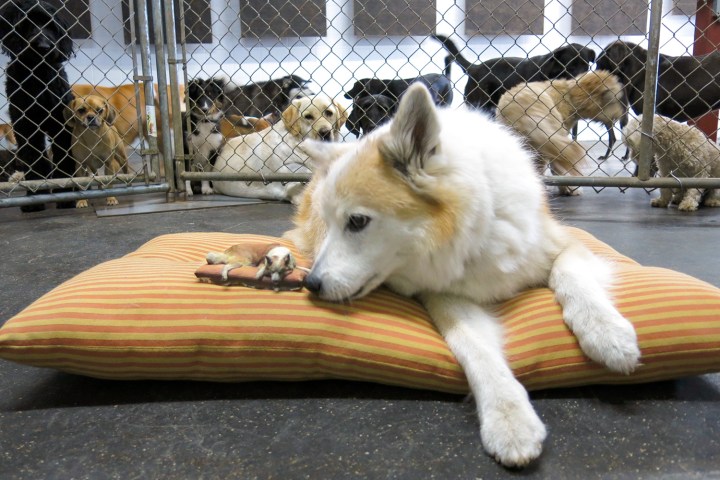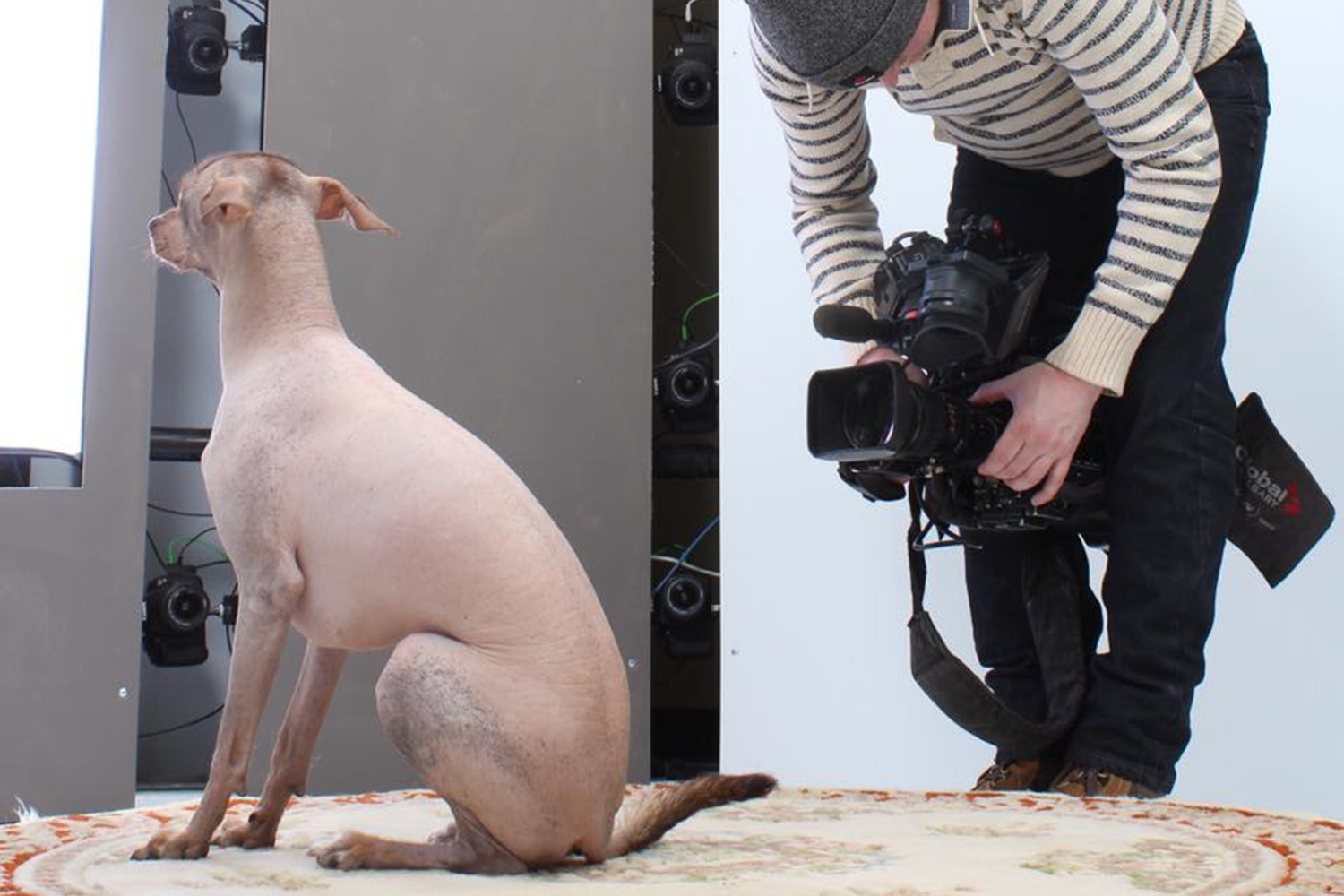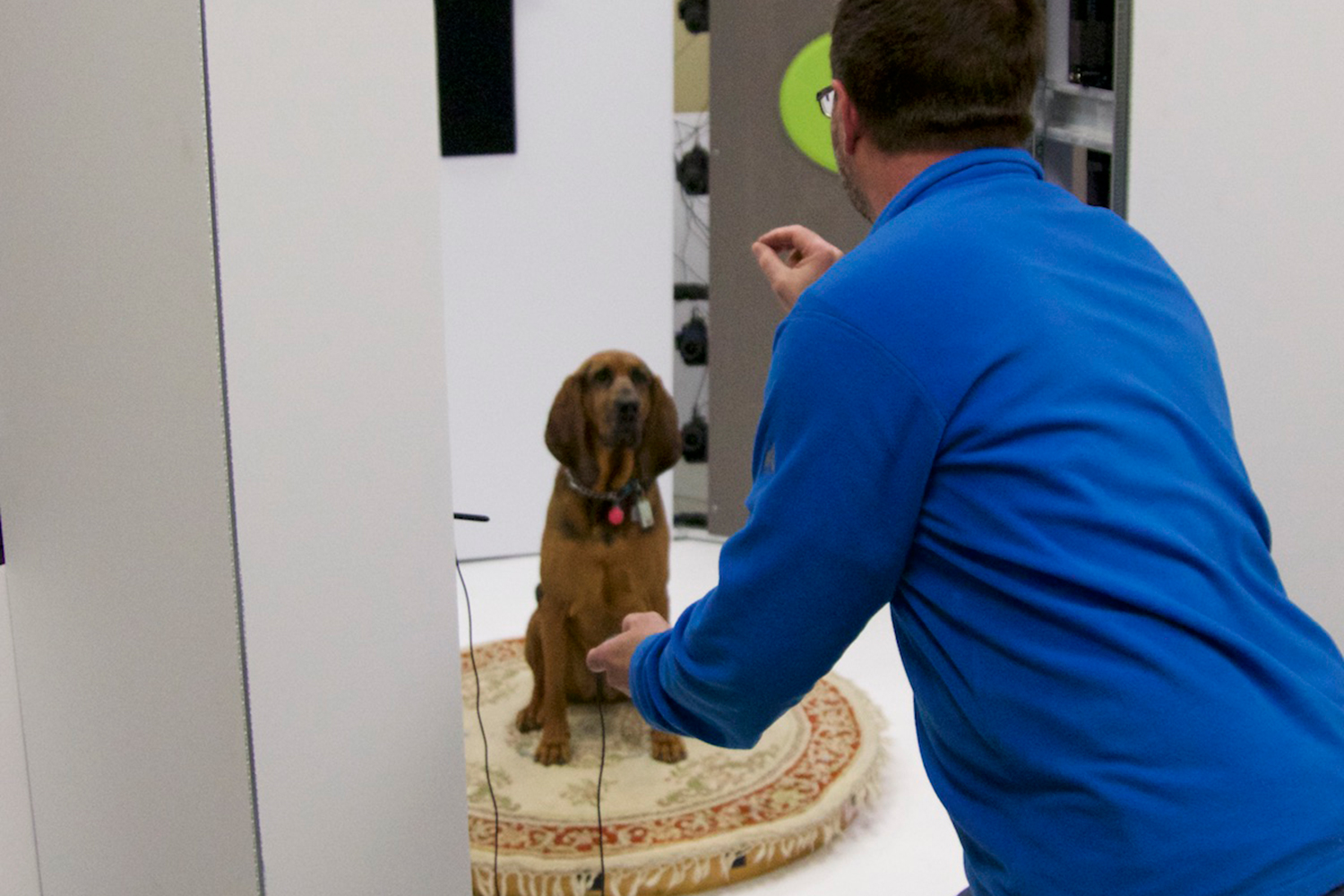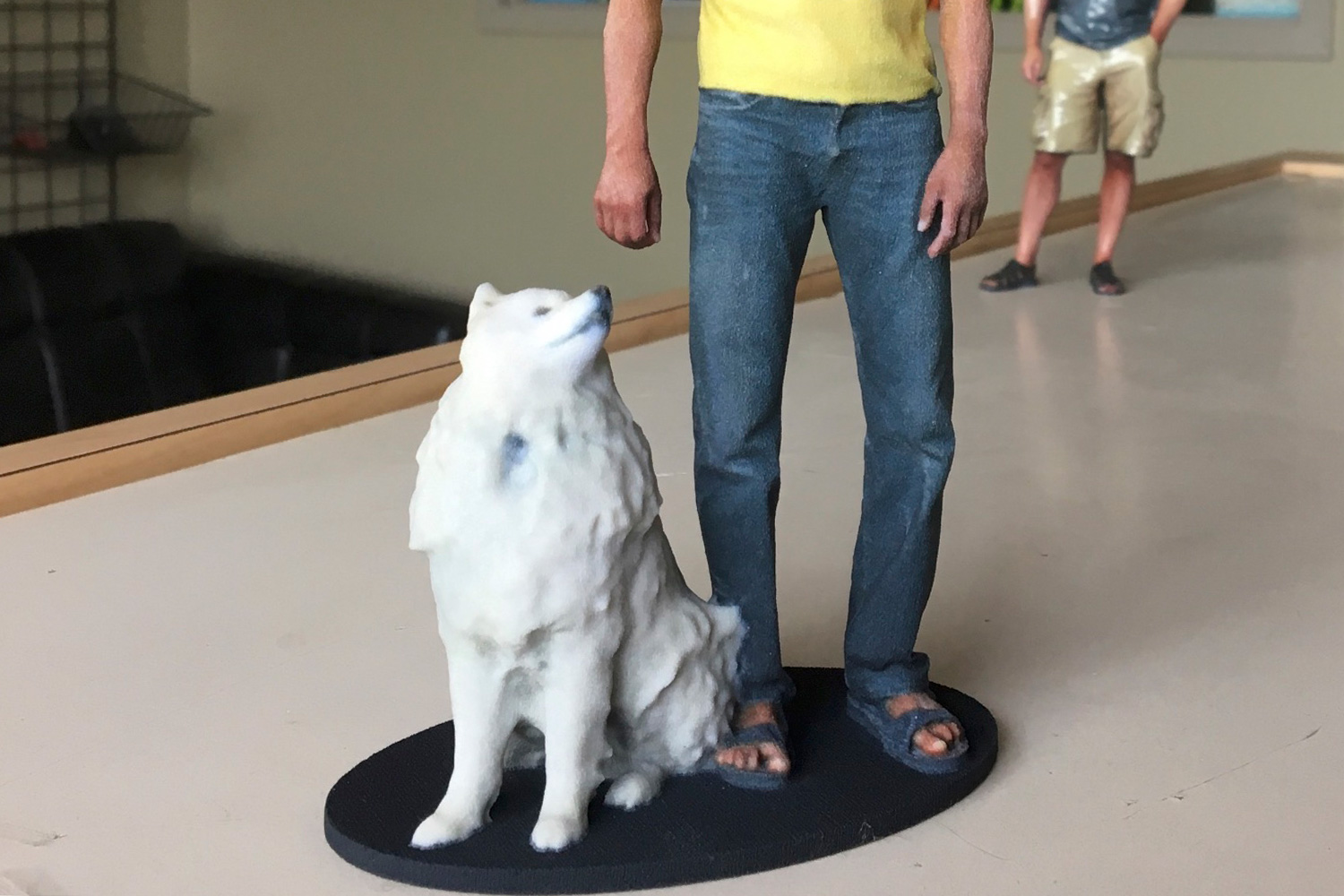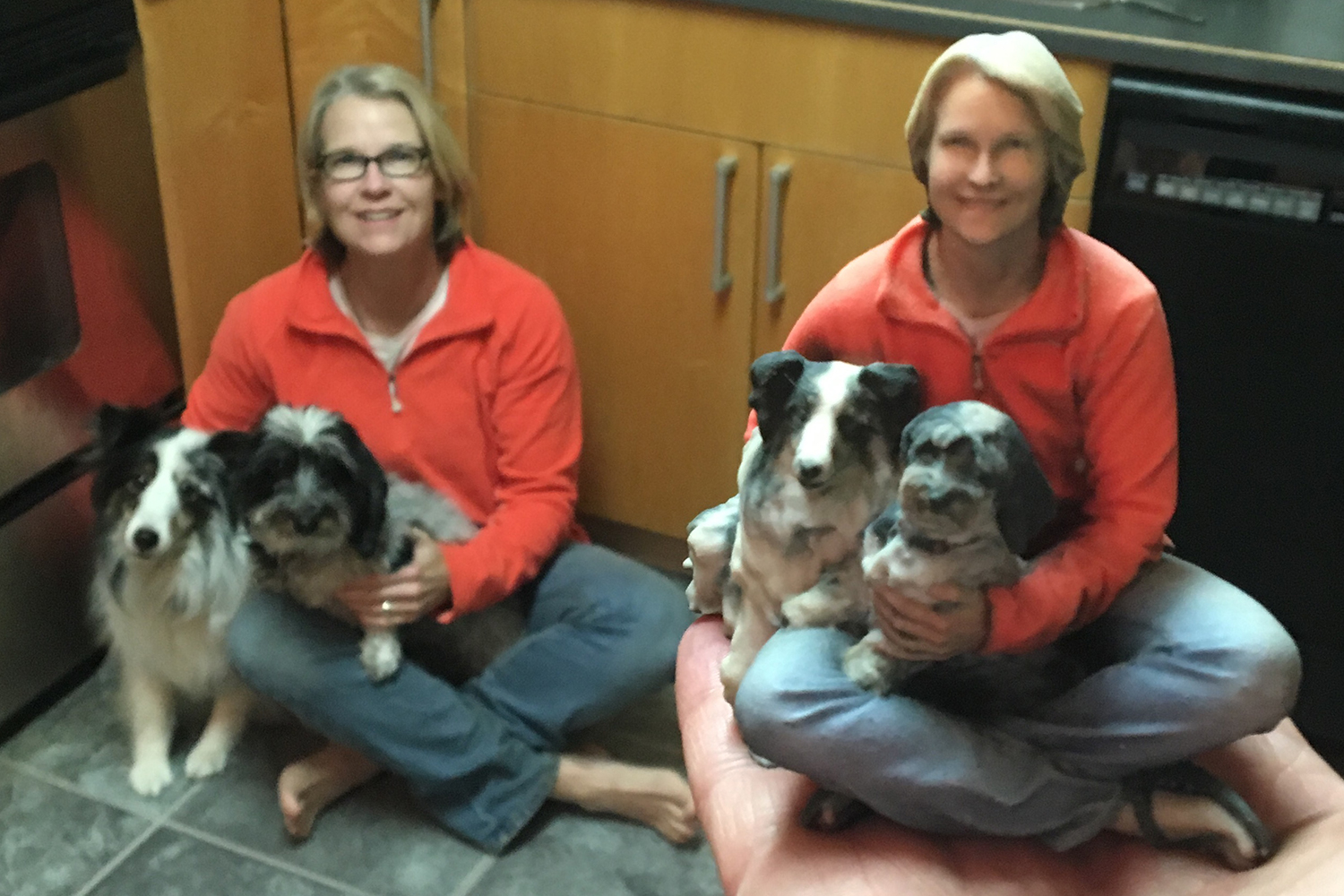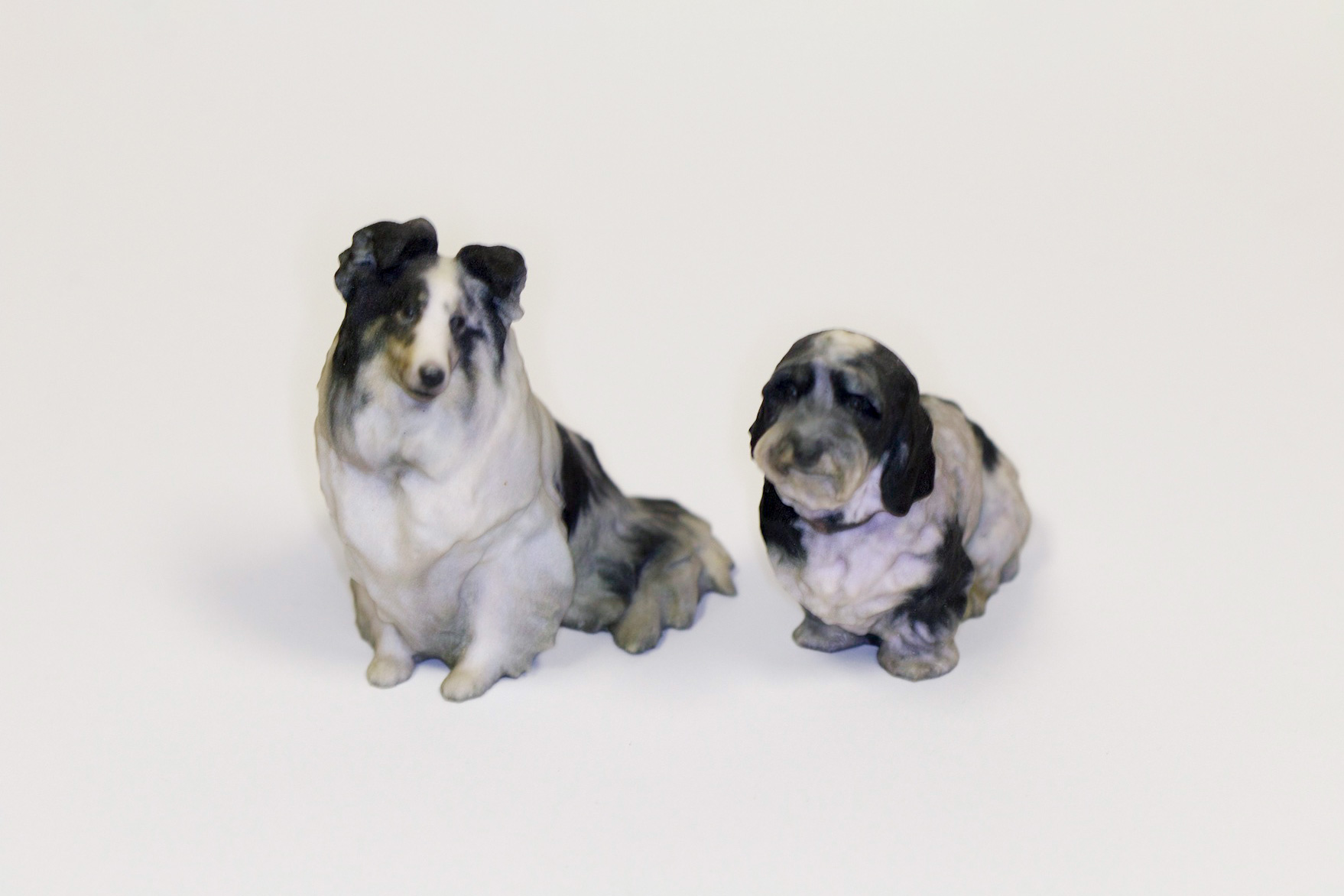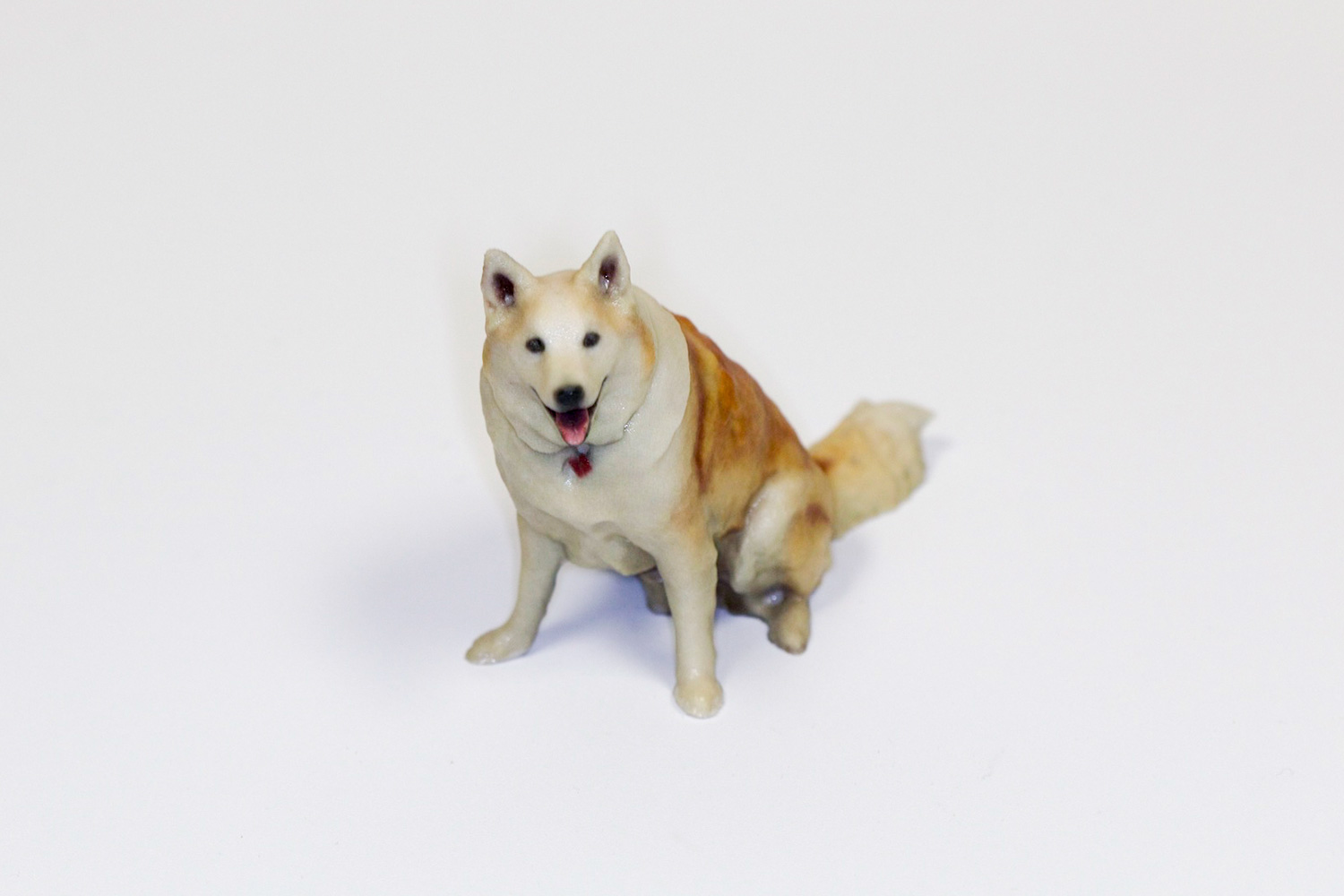You could say that it all started with Copernicus. No, not the Reformation-era astronomer who placed the sun in its rightful position in the center of our solar system, but a beautiful Icelandic Sheepdog, named Coppy for short. Coppy was 13-years-old and he wasn’t well. It was winter 2017, and it was clear to everyone that he didn’t have long left. Which is why Brian Burke, the owner of “Back in the Pack,” the dog daycare center that Coppy went to, was in such a hurry to scan him.
Burke produces picture perfect scale replicas of people’s beloved dogs.
Burke, 52 years old, isn’t just the owner of a doggy daycare center. Living in Calgary, Alberta, Canada, Burke is a serial entrepreneur — which, in his case, may be a nice way of saying that, until recently, he hadn’t totally figured out what he wanted to do. He graduated from the University of Calgary as a painting major with his heart set on being a comic book artist. Then decided he didn’t have the drawing skills to be the next Jim Lee or Neal Adams, so retrained as an architect. He graduated into a recession. So he started work as a pet photographer and set up a doggy daycare business with his wife.
What may have seemed disparate career strands have perfectly converged with his latest venture, however: seizing on the recent breakthroughs in 3D scanning and 3D printing to produce picture perfect scale replicas of people’s beloved pet dogs.
This is where Copernicus, a.k.a. Coppy comes into the picture. With just months left for the Icelandic Sheepdog, Burke immortalized him as his very first 3D printed canine replica. Snapping 24 photos of Coppy with a single camera, Burke was able to create an accurate 3D model by stitching the photos together on a computer. The effect was so convincing that he became convinced that he had struck on a great idea for a business.
Burke is able to create an accurate 3D model by stitching photos together on a computer.
If this sounds an unusual idea, that’s because it is. But unusual isn’t a pejorative in the online world. A niche idea that maybe appeals to a fraction of a percentage point of the population is a whole lot more exciting if that population happens to be 3.58 billion, the estimated current total of internet users worldwide. Creating a perfect scaled-down replica of your dog got a big awareness boost last year when Facebook CEO Mark Zuckerberg created a miniature 3D printed replica of his dog Beast for its sixth birthday.
Burke’s 3D scanning and printing pet business does what Mark Zuckerberg does (well, minus the whole “owning Facebook” thing), but makes it available to whoever wants one. As a tribute to Copernicus, who passed away in January 2018, Burke calls his multi-camera 3D capture system the “Coppy Machine.”
Here’s how it works: “We do a 3D capture process of the dogs involving 60 cameras,” Burke told Digital Trends. “We then transfer that information to the computer, where it’s rendered into a 3D model. Once it’s been rendered, we then edit it much like you would with an image for a professional photo shoot. That means making it print-ready by finishing the model and getting rid of any little gaps that are missing. We then send the file off to the ProJet 660 printer. After this, the print goes through a finishing process and what results is a full color figurine. We then package it up and ship it out.”
Prices for a replica of your beloved trusty canine start at CAD$150 ($119), although Burke said that they can also accommodate more ambitious requests — such as manufacturing larger replicas or even putting a model of the owners in there with their dog. You can think of the results a little bit like a 21st century spin on taxidermy, only without the whole “stuffing an animal” thing.
“I’ve been working for 35 years to come up with this one really cool idea,” Burke continued. “In the back of my mind, I was always looking for something fun and innovative. Now, without any anticipation of it, I’ve come up with something that’s pretty freaking cool.”
“The announcements companies like Intel made at this year’s CES — it’s just mind blowing what’s coming.”
The business launched this year, and Burke said it’s doing well so far. His one regret (and a problem he’s currently working on) is that it requires people to physically visit his studio with their dogs so that they can be properly scanned in the right setting. That means that, unless you’re happy to hop on an airplane, the service is only really available to those who live within striking distance of Alberta. Burke explained that, at present, he’s exploring opportunities to connect with other venues with 3D scanning capabilities around the world, thereby opening pet scanning to whoever wants it.
One thing that’s for certain, he says, is that 3D scanning and printing is going to be big. It’s just a matter of coming up with an innovative timely way of taking advantage of it. “If you look at where this technology is going, it’s amazing,” Burke said. “The announcements companies like Intel made at this year’s CES — it’s just mind blowing what’s coming.”
What are his own plans for the future? “We’re thinking of getting into cats,” he said. “There’s a big demand for cat-scanning right now, but we’re trying to figure out how to do it. It’s harder to get a cat to pose how you want it to. I need to work out the variables for pricing depending on whether it’s a cat sitting down, laying down, sitting on a bed or a cat tree. It’s complicated.”
The best ideas always are.
